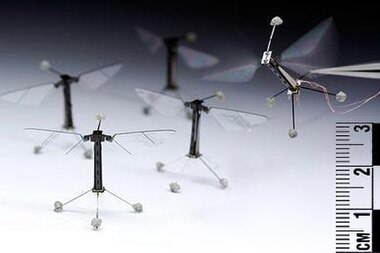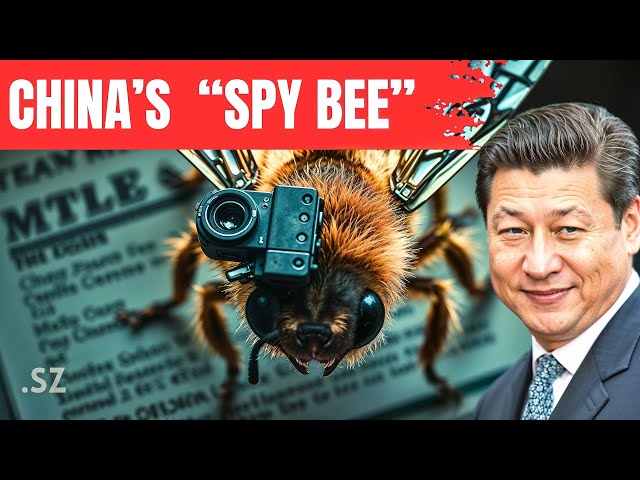Table of Contents
Introduction to the breakthrough
The Chinese team of scientists has managed to create something that was previously possible only in the science fiction genre in any remarkable combination with nature, making use of technology. Think of bees being converted into living drones, with the ability of doing anything, but pollination up to surveillance. This historical innovator is not only a display of ingenuity but also the load of questions regarding the way humans interact with nature. Venturing further into technological principles in which this innovation functions, it seems necessary to discuss the areas of its possible use and the moral questions behind such a phenomenal advancement. Let us find out what this portends in our future and in our environment.
How the technology works
The futuristic technology incorporated on this breakthrough is that of how to manipulate bee neurology innovatively. Scientists have created a technology in which miniature, weightless equipment is connected with the nervous system of the bees.
These devices enable scientists to beam their signals and make the insects behave in a manner that turns them to flying drones. It is a complex but interesting process since we use microchips that can be fixed on the bees without causing any injuries to them.
When bees receive such signals, they change their behavior and patterns of flight. This will open up an opportunity to be remotely controlled similarly to conventional drones but with biological advantages.
In addition, the technology is fitted with sensors that take data concerning environmental conditions when they fly. This dual functionality not only indicates that it has authority over living organisms but it also opens up a new direction towards data gathering in inaccessible locations.
The implication of such developments is that there is a great jump forward in terms of bioengineering and robotics to Pandora, where nature answers to the advanced science of tomorrow.
Potential applications and benefits

The possibilities of transforming the bees into real-life drones are enormous and thrilling. Such altered insects may contribute greatly in the agriculture sector helping farmers in pollination at a new level. Consider fields that grow because of these wagging aids.
Out-of-farm, they would also be available to monitor the environment. Miniature sensors, mounted on bees, can be used to collect information concerning air-quality or other aspects of the soil, as bees fly in their natural environments. This would provide priceless information with regard to ecological health.
This technology is also useful as a search and rescue mission. Well-trained bees would have the ability to find missing persons in un-accessible places and give quick responses that are not possible using traditional drones as they are too big.
Further, they can quickly move silently and are therefore an ideal outfit to use with surveillance missions without causing disruptive noise that is characteristic with the use of conventional drones. The opportunities are interesting, and it opens up the way to new solutions in different spheres.
Ethical concerns and controversies
The latest discovery in China by a scientist has caused a huge controversy along with ethical considerations. The process of humanizing bees into drones will bring issues concerning animal welfare. Are we sacrificing their instincts of nature to go technological?
Issues also relate to biodiversity. What would occur on the eventuality that these engineered bees out-compete their natural counterparts? The subtle balance of the ecosystem will be devastated and this might have unimaginable effects.
Besides, it also comes to the privacy and surveillance issue. Such a use of drones is usually a cause of many eyebrows because of its intrusive capability of monitoring. The insertion of the bee-like drones could cause the involvement of nature with technology in a very disturbed manner.
Frequent perception has been a very significant feature in either accepting or rejecting such innovations. It could make many individuals feel that they would not be comfortable tampering with living organisms for the gain of human beings, thus the need to have open debates on this issue.
Comparison to other drone technologies
Comparing the discovery of the Chinese scientist to the ancient drone technologies, one can outline a few differences. Traditional drones are powered by mechanics and batteries which have many problems, such as limited flight time, and poor control in confined areas.
Bioengineered bees on the other hand are lightweight and are able to maneuver their way around a complex environment. They have exceptional capacity of agility due to their natural instincts which makes them fruitful in activities such as pollination or surveillance among others, which human made drones fail.
In addition, they do not need a lot of maintenance or any training to fly a drone as any other standard drone would. This has the potential to hugely cut down on the operational expenses in some of the applications.
But it is necessary to take note that they have a low distance as opposed to conventional drones that can reach long distances without hindrance. Innovative as this technology is, this is only one part of a new picture being painted in aerial innovations.
Future possibilities and advancements
The future holds many thrilling technologies of this revolutionary technology. Think of millions of bioengineered bees bearing sensors that could tell real time conditions of the environment. This capability of theirs to collect data may transform agriculture and conservation.
We may also find these modified bees contributing in pollination of large field areas, where fresh crop levels will be several times higher compared to using chemicals and other means of interfering with plants.
Other than farming, their possible application in search and rescue activities can be interesting. The smaller unmanned aerial vehicles would also have the capability to fly in debris after a disaster happens and locate the people who survived even when the normal method had failed.
They could also perhaps through more studies introduce artificial intelligence into such bees so that they can form their decisions solely depending on their environment. Such a breakthrough can change the way we relate to the ecosystems in the world.
Furthermore, schools may adopt the use of the technology in the school teaching roles i.e. they would demonstrate to the students how innovation can be used to simulate nature to have a positive impact on society. Possibilities are endless and stretching further than our imagination is permitted to explore.
Conclusion: Impact on society and environment
The recent new invention of the Chinese scientist in converting bees into real life drones bears major consequences both to the society and the environment. With this technology, we might experience bumper harvests as the pollination process will be advanced in our farms. This could result in higher crop production and sustainable agricultural activities.
Nonetheless, there is an argument as to how this innovation will impact natural ecosystems. Although the engineered bees can be used in food production, there is a question about biodiversity and possible extinction of wild bee species since they will now be competing with the engineered ones. The interplay between standing technology on the one hand, and the environment on the other is a fine one.
In addition to this, perception is very essential in acceptance of such technologies. Genetic manipulation is something that people tend to fear because of the unintended effects it had on the complex web of nature.
The advancements will require the regulatory frameworks to change with time, with additional research. The decision makers should strive to make sure that ethical issues are put in place and take advantage of gains accordingly.
With the scientists moving in the continued direction, society finds itself in a junction; to pursue a futuristic approach to age old problems or through measures of caution to preserve the health of our planet to the future generation. The moves that we take today in line with innovations such as those that are as a result of the activities of the innovative minds will change the face of the tomorrow radically.
